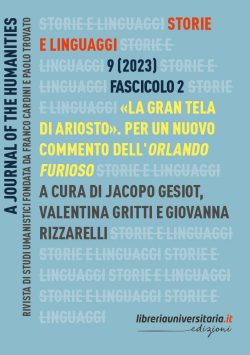Descrizione
What are the factors that may enable a society to preserve its culture despite a total political collapse and a lasting subjugation to a foreign power? When, where and why did arise the practice to expel an entire category of people beyond a country’s borders? What can one learn about group mentality through the personal names that group members give to their children? What were the uses of the harbor chain, from the Greeks, Phoenicians and Romans of Antiquity down to the Prussian-French war of 1870? What does a hitherto unknown Arabic account reveal about Genoa of the 930s? Why did the Norman priest Giuàn of Oppido Lucano decide to convert to Judaism in 1102? How did the Pisan enthusiast Ranieri come to regard himself – in Frankish Jerusalem in the mid-twelfth century – a second incarnation? How did the Franciscan friar William of Rubruck present in 1254 the Christian case during a debate with a Buddhist at the court of the Mongol Grand Qan Möngke – the only known case of such a debate in medieval times? What do we know about the Genoese Street of thirteenth-century Frankish Acre? To what extent did Latin Christians and Muslims surmount religious barriers in the official correspondence between them? What roles does the crusade motif play in contemporary Israeli political discourse? These and other questions are discussed in the 31 studies of medieval and world history collected in the present volume.
Preface
Part I – Studies in Genoese History, 10th-14th centuries
1. Una nuova fonte per l’incursione musulmana del 934-935 e le sue implicazioni per la storia genovese
2.Mercanti genovesi in Alessandria d’Egitto negli anni Sessanta del secolo XI
3. Genoa’s Golden Inscription in the Church of the Holy Sepulcher: A Case for the Defence
4. Again: Genoa’s Golden Inscription and King Baldwin I’s Privilege of 1104
5. (with Eliezer Stern:) Un nuovo sguardo sul quartiere genovese di Acri
6. Segurano-Sakran Salvaygo: Un mercante genovese al servizio dei sultani mamalucchi
7. Noms de saints et mentalité populaire à Gênes au XIVe siècle
8. L’Officium Robarie di Genova: un tentativo di coesistere con la violenza
9. Chi era Andrea Franco?
10. The Genoese Notaries of 1382: The Anatomy of an Urban Occupational Group
11. (with Eliyahu Ashtor:) Una guerra fra Genova e i Mamlucchi negli anni 1380
12. Jerusalemite Jews in Genoese Famagusta, 1388
13. Toponymic Surnames as Evidence of Origin: Some Medieval Views
Part II – East-West Encounters
14. (with Reuven Amitai) Franks in the Eastern Mediterranean, 1047
15. Again: Arabic rizq, Medieval Latin risicum
16. A Note on Jerusalem’s Bimaristan and Jerusalem’s Hospital
17. The Voyages of Giuàn-Ovadiah in Syria and Iraq and the Enigma of his Conversion
18. La Via sancti sepulchri come tramite di cultura araba in Europa
19. (with Etan Kohlberg) The Intercultural Career of Theodore of Antioch
20. Benvenuto Grapheo da Gerusalemme – da Salerno – da Montpellier e la sua Ars probatissima oculorum
21. Religion in Catholic-Muslim Correspondence and Treaties
22. Rival Conceptualizations of a Single Space: Jerusalem’s Sacred Esplanade
Part III – Pilgrims and Hermits
23. Dimensioni comparative del pellegrinaggio medievale
24. The Latin Hermits of the Frankish Levant Revisited
25. Un Santo venuto da Gerusalemme: Ranieri Scacceri
Part IV – Studies in World History
26. Expulsion as an Issue of World History
27. Cultural Persistence Despite Total Political Collapse: The Role of Elites
28. The Multilateral Disputation at the Court of the Grand Qan Möngke, 1254
29. Prolegomena to a World History of Harbour and River Chains
Part V – Two Inroads into Modern History
30. Il Distaccamento italiano in Palestina (1917-1919)
31. Il motivo della crociata nel pensiero politico israeliano
Addenda et corrigenda
Bibliographical note
Index






